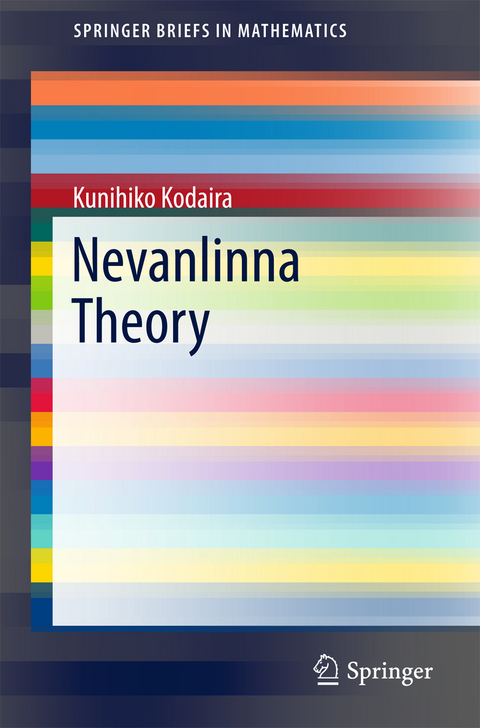
Nevanlinna Theory
Springer Verlag, Singapore
978-981-10-6786-0 (ISBN)
Kunihiko Kodaira (1915–1997) was a Japanese mathematician. He developed the theory of complex manifolds — high-dimensional geometric objects that have complex numbers as coordinates. They are invisible to the naked eye except for Riemann surfaces, which are one-dimensional complex manifolds. By using such analytical methods as harmonic integrals and algebraic machinery such as sheaf cohomology, Kodaira found that a geometry of complex manifolds as rich as that of concrete shape could be developed — a discovery of great importance. In 1954, Kodaira received the Fields Medal for his series of works on harmonic analysis represented by the Kodaira vanishing theorem. In the 80-year history of the Fields Medal, which has included 55 awardees since 1936, he was the fifth recipient worldwide and the first in Asia. In his later life, Kodaira was awarded the 1984 Wolf Prize in Mathematics for his outstanding contributions to the study of complex manifolds. Kodaira studied harmonic integrals with penetrating insight, and with applications that were of great consequence to algebraic and complex geometry — for instance the deformation theory of complex structures (in collaboration with D. C. Spencer), the classification of complex analytic surfaces, and the projective imbedding theorem. Researchers in these subjects worldwide continue to be greatly influenced and inspired by his work.
Preface1. Nevanlinna Theory of One Variable (1)1.1 metrics of compact Rimann surfaces1.2 integral formula1.3 holomorphic maps over compact Riemann surfaces whose genus are greater than 21.4 holomorphic maps over Riemann sphreres1.5 Defect relation
2. Schwarz--Kobayashi's Lemma2.1 Schwarz--Kobayashi's Lemma2.2 holomorphic maps over algebraic varieties (general type)2.3 hyperbolic measures
3. Nevanlinna Theory of One Variable (2)3.1 holomorphic maps over Riemann shpres3.2 the first main theorem3.3 the second main theorem
4. Nevanlinna Theory of Several Variables4.1 Biebelbach's example4.2 the first main theorem4.3 the second main theorem4.4 defect relation4.5 applications
References
| Erscheinungsdatum | 19.01.2018 |
|---|---|
| Reihe/Serie | SpringerBriefs in Mathematics |
| Übersetzer | Takeo Ohsawa |
| Zusatzinfo | 30 Illustrations, black and white; XI, 86 p. 30 illus. |
| Verlagsort | Singapore |
| Sprache | englisch |
| Maße | 155 x 235 mm |
| Themenwelt | Mathematik / Informatik ► Mathematik ► Analysis |
| Mathematik / Informatik ► Mathematik ► Geometrie / Topologie | |
| Schlagworte | Bieberbach’s example • First Main Theorem • hyperbolic measure • MSC (2010): 32A22, 32H25, 32H30 • Schwarz--Kobayashi’s lemma • Second Main Theorem |
| ISBN-10 | 981-10-6786-4 / 9811067864 |
| ISBN-13 | 978-981-10-6786-0 / 9789811067860 |
| Zustand | Neuware |
| Informationen gemäß Produktsicherheitsverordnung (GPSR) | |
| Haben Sie eine Frage zum Produkt? |
aus dem Bereich


